These are the five signs that an avoidant is hiding deep feelings for you.
But here’s the thing.
You’ve watched this video before. YouTube is full of them. For heaven’s sakes, I’ve done them before.
So, I want to do something unique. I want to make a rule which actually makes this video ten times more difficult for me to make.
Any “sign” that I talk about today must require success story proof.
What constitutes proof?
It either has to come from the mouth of an avoidant, OR, it has to come from the mouth of someone who got an avoidant back.
Alright, let’s start with sign number one.
Sign #1: Indirect Acceptance of Vulnerability
This is Regina.
On March 15th, 2023 I had the pleasure of interviewing her after she had successfully won her, by her own words, dismissive avoidant ex-boyfriend back.
Here’s what she had to say,
Regina 15:35:
“…I let go of the end picture. Like, for me, I don’t want to get married, I already have children that are grown. And I’m not looking for that part of my life to be fulfilled again, either. So as far as like, the end goal for me, it was basically just are we going to be able to rebuild a solid foundation for when all that’s gone? …once I let go of all the other pressure moving in together, I need a baby daddy, and he realized it. Also, that’s really kind of like the turning point for us when we were like, Okay, so like, we can just define our own relationship… and not really care about what the outside world or our families are, like, ‘why aren’t you getting married and moving in’? Like, well, we don’t care.”
So, it goes without saying that avoidants generally avoid talking about their emotions.
They’ll avoid it like the plague.
Yet, a subtle sign that an avoidant may be holding deep feelings for you is when they allow themselves to be part of a relationship dynamic that strips away traditional expectations.
I mean what were Regina’s exact words?
So basically by accepting a relationship that doesn’t follow conventional rules (like not moving in together or getting married), the dismissive avoidant is indicating, indirectly, that they feel secure enough in the connection to invest emotionally on their own terms.

What Are Your Chances of Getting Your Ex Boyfriend Back?
Take the quizTheir willingness to stay and build a foundation for the future, without feeling pressured, is a sign of deeper feelings being at play—especially since they typically shy away from long-term emotional investments.
And just a little side note before we move on to Sign #2 here. You’re definitely going to notice a recurring theme throughout this video.
A lot of the people I interviewed keep saying the same things over and over again about dismissive avoidants.
But I don’t want to tell you that yet. I want to see if you can figure it out yourself.
Let’s move on to Sign#2:
Sign #2: An Emotional Pull After Personal Growth
This is Stacia.
I had the pleasure of interviewing her on April 18th, of 2023, after her ex ghosted her completely.
Oh, and when I say her ex ghosted her I’m not doing it with “air quotes.” I mean, he straight up ghosted her out of the blue with no explanation for two months.
It’s actually this little excerpt from our interview that I want to highlight:
Stacia 37:43:
“…when you become that better person that you are, they’re just like addicted to it, they can smell it, and they come back around. I feel like, personally for my situation, if I had tried to manipulate him, he would have caught on and things would have gone right back into the same cycle. Nothing would have changed. But when I stopped focusing on him and started focusing on myself, that’s when things shifted. He saw the change in me, and I saw the change in myself. It wasn’t about trying to get him back anymore, it was about becoming the best version of me. And that’s what brought him back.”
Alright, so what is she insinuating here?
Well, according to her experience a dismissive avoidant who has deep feelings but is hiding them, may be drawn back to someone when they witness genuine personal growth.
Unlike attempts to manipulate or force a reunion, true self-improvement acts as a powerful, almost magnetic force.
Avoidants, who are typically wary of emotional dependence, may feel safer re-engaging with someone who demonstrates self-sufficiency and inner strength.
Stacia describes how, after she worked on herself and stopped trying to manipulate her ex back, he was naturally drawn to her. This suggests that dismissive avoidants can recognize and are attracted to personal growth, which may signal their deeper emotional attachment when they return without manipulation or pressure.
Let’s move on,
Sign #3: Monitoring Your Social Media Activity
This is Kelsey.

What Are Your Chances of Getting Your Ex Boyfriend Back?
Take the quizI interviewed her after she reunited with her ex in April, 2023.
And she had a pretty tough situation.
Basically her ex gave her the whole, “I have a lot of love for you but I’m not IN love with you.”
But it was what she said in my interview with her that really struck a chord.
Kelsey 07:32:
“…he would remember little details too, like, ‘I remember you went to this park.’ And so I was really amazed. And I was like, ‘Oh, wow, he actually pays attention to my stories. So yeah, that was really great to know.”
So, what is Kelsey saying here?
Even though avoidants often seem emotionally detached, they may secretly keep tabs on you through indirect means, like watching your social media posts.
In Kelsey’s case, her ex admitted to watching her stories and remembering small details, even though he avoided her in person.
This hidden behavior reveals that dismissive avoidants can remain emotionally invested without showing it openly, using online activity as a safe distance to stay connected without appearing vulnerable.
Alright, let’s move on,
Sign #4: Engaging After You Truly Let Go
Meet Thida.
I interviewed her back on March 8th, 2023.
Her case was interesting. She lets go of her ex and then not only did he come back but then, like dominos, all the other ones started coming back as well.
Listen to this,
“It wasn’t until I gave up that he came right back into my life. I broke no contact, like five or six times. One of my favorite things I always say is in order to change the dance, you have to change the song. And I felt like I was just repeating t he same song over and over where nothing was happening. I just need to let him go. So, I told him to eff off and completely dropped off the face of the earth. He never heard a peep from me. But my social media was still active. I was posting where I was going, what I was doing… and during this time, I thought he wasn’t paying attention, but somehow he was. After maybe 60 days of complete silence, he messaged me and said everything a girl would want to hear—’I love you, I regret everything, I want to get back together.'”
Alright, so Thida mentions that after she completely gave up on the relationship and told her ex to “eff off,” she focused entirely on herself, her career took off, and she remained active on social media.
During this time of complete silence and distance, her ex, who initially appeared detached and uninvolved, suddenly reaches out with declarations of love and regret.

What Are Your Chances of Getting Your Ex Boyfriend Back?
Take the quizWhat can we learn from this?
Well, it suggests that dismissive avoidants may only feel safe enough to reveal their deeper emotions once they perceive the other person has genuinely moved on. It could be their fear of losing the connection for good that triggers a response.
And we know this.
According to “Free To Attach”,
“Avoidants are free to long for an ex once that person is unavailable out of the relationship, and typically out of contact so they are untouched by actual engagement and their deactivation systems aren’t triggered.”
So, basically it’s only after an avoidant sees you move on that they give themselves permission to “long for you.”
But do you remember way back towards the beginning of this video I made this off hand comment about their being a recurring theme.
Well, this is the theme. What’s the one throughline that connects them all?
I’ve shown you four success stories that I’ve personally interviewed,
All of them had avoidant exes who came back.
- For Regina, her avoidant comes back once she, in her own words, “let’s go of all the pressure of moving in together.”
- For Stacia, her avoidant comes back when again, in her own words, she ” stopped focusing on him and started focusing on herself.”
- For Kelsey, her avoidant comes back when she starts doing things away from him, like going to the park, and moving on.
- And then finally for Thida, she literally says she “let go,” and that’s when things started clicking into place.
All four of the success stories I just mentioned have some element of “letting go” involved.
Why? Why is this so effective?
Well, the pattern of “letting go” seen across all four success stories works because it shifts the dynamics of the relationship in a way that addresses the avoidant’s core fears and needs.
You see, avoidants typically struggle with emotional intimacy and fear becoming overwhelmed or trapped in relationships, which leads them to pull away or withdraw when they feel pressure or expectation.
We know this, I’ve basically structured this entire YouTube channel around it.
When the other person in the relationship “lets go,” it removes this pressure. By focusing on themselves rather than the relationship or the avoidant partner, the dynamic changes from one of pursuit to one of distance and independence.
This creates a safe emotional space for the avoidant partner.
Think of it like this, there are four main phases to the thought process,
- Phase One: Fear of Loss – When the partner genuinely lets go and stops chasing, it subtly signals to the avoidant that the relationship might actually slip away. This can trigger a fear of losing something meaningful without the immediate pressure to act. It allows the avoidant to reconsider the relationship from a position of autonomy rather than fear of being overwhelmed.
- Phase Two: Independence Becomes Attractive – Avoidants are often drawn to partners who exhibit independence and self-sufficiency because it reduces the anxiety around emotional closeness. When the partner focuses on their own growth, it signals to the avoidant that their space and boundaries are respected. This creates a pull effect, where the avoidant feels safer re-engaging on their terms.
- Phase Three: Breaking the Pursuit Cycle – By letting go, the partner disrupts the cycle of emotional pursuit, where the avoidant continually withdraws as their partner pushes for connection. Avoidants need space to process their emotions at their own pace, and when they’re no longer being pursued, they have the opportunity to miss their partner and reflect on their feelings.
- Phase Four: Authenticity in Change – All four success stories I just took you through reflect the importance of genuine personal growth. Letting go isn’t about manipulating the avoidant partner; it’s about truly focusing on yourself and becoming stronger or more fulfilled independently. The avoidant senses this authenticity, which is far more appealing than attempts to control or force the relationship to progress.
Ultimately, letting go allows the avoidant partner to re-enter the relationship on their own terms, free from the weight of expectation.
It gives them the emotional space they need to reconcile their own feelings, leading to the moments when they return.
Ah, but so far we’ve only really peeked behind four doors.
There is still one more left and it’s the best one.
Sign #5: They Fight Their Internal Voice
I thought I’d switch gears and call upon an “actual” avoidant for this one.
On the avoidant attachment subreddit I stumbled across this thread.
It was written by an avoidant wondering, “How to know if I have feelings hidden deep down?”
Now, I’m going to spare you the time and not read the whole thing out to you but just an abbreviated version. It goes like this:
“Hi! I’m avoidant and struggling to understand my feelings. For years, I’ve avoided relationships, saying I don’t like anyone, but now I’m getting close to a friend. We spend a lot of time together, and I feel safe and happy around him. He’s kind, patient, and secure, but my inner critic keeps picking at his physical appearance, even though I know he’s exactly the type of person I’ve always dreamed of being with. I’m confused if I’m genuinely not attracted to him or if my fears are clouding my feelings.
I love hugging him and feel happy when I see him, but I haven’t been attracted to anyone in a long time, unless they’re unavailable. He’s a great guy who respects my space and never pressures me. I worry I’ll miss out on something special if I run.
How do I silence my fears and see things clearly? Could physical attraction develop over time with trust? Is the fact that I’m questioning this a sign that I do have feelings? I don’t want to risk hurting him if I’m unsure.”
Here’s what I think is happening.
I think this whole writeup is proof of what it actually looks like in real time when an avoidant is holding deep feelings.
I mean, think about it for a moment.
- You’ve got their internal struggle between their desire for connection
- And the critical voice that tries to push them away.
And that’s a common thing.
Avoidants often experience conflicting emotions when they get close to someone, and their defense mechanisms kick in to protect them from potential emotional pain.
In this case, the avoidant’s internal critic focuses on superficial aspects, like physical appearance, to rationalize why they shouldn’t pursue the relationship, even though all the deeper signs—feeling safe, valued, and happy—are pointing in the opposite direction.
The fact that they are questioning their feelings so intensely is a sign of emotional depth. Avoidants tend to deny or suppress their emotions, but when those feelings become undeniable, the internal conflict begins. This battle between their fears and their emotions can manifest as self-sabotage, where they latch onto surface-level flaws or reasons to avoid vulnerability, even though their heart is telling them otherwise.
What’s profound here is that the very act of questioning and fighting these thoughts is proof that they do care deeply. If there were no emotional investment, there would be no internal struggle.
The avoidant is trying to protect themselves from the potential hurt of falling for someone, but in doing so, they are actually revealing how much this person means to them. The critical voice serves as a defense mechanism, but the persistence of these thoughts shows that the feelings underneath are real and significant.
Fears often translate into disgust or rejection, as a way to distance themselves from vulnerability.
Yet, the fact that they’re wondering if these feelings could deepen with time, and that they hope there is something real beneath their fears, is a strong indicator of attachment.
Avoidants often resist acknowledging their own emotional needs, and this resistance is precisely why they end up feeling conflicted. In fighting their internal voice, they are also fighting against their instinct to run, which suggests that this person has already touched them on a deeper level than they are willing to admit.
The true sign of deep feelings here is in the avoidant’s struggle to push the person away while simultaneously hoping that their fears will subside.
This internal fight reflects not just uncertainty, but a fear of what those deep feelings could mean—vulnerability, connection, and the possibility of emotional risk.

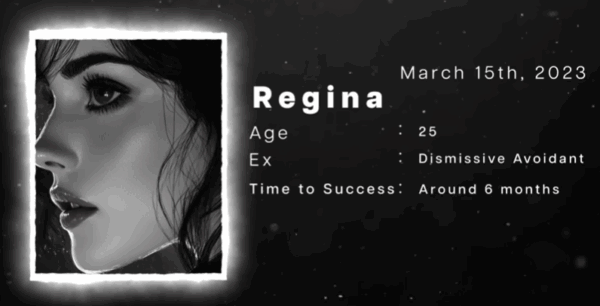
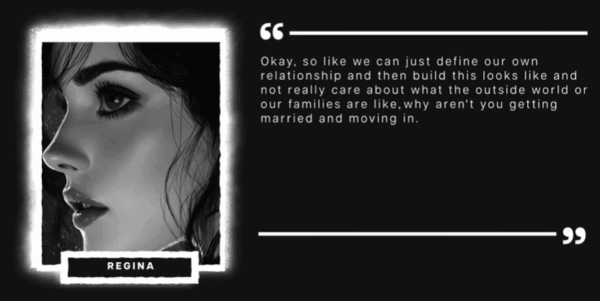

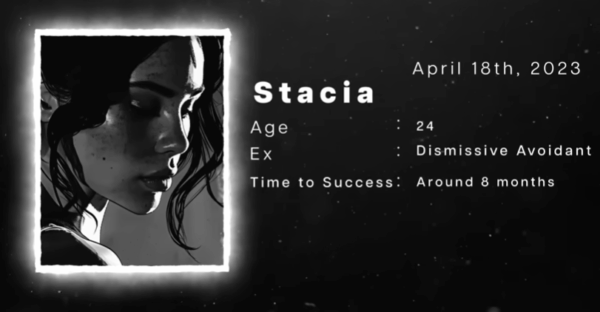

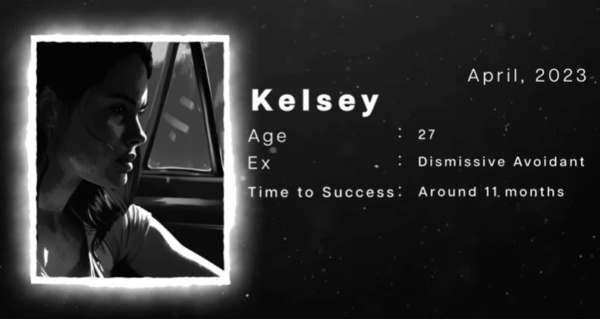
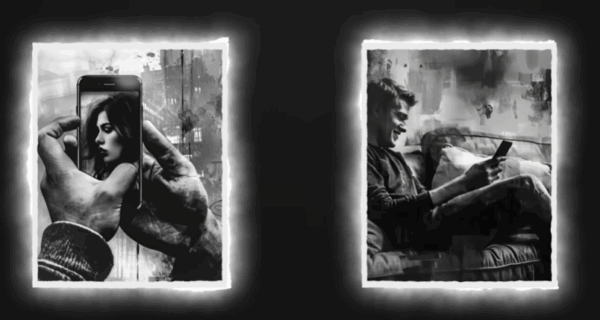
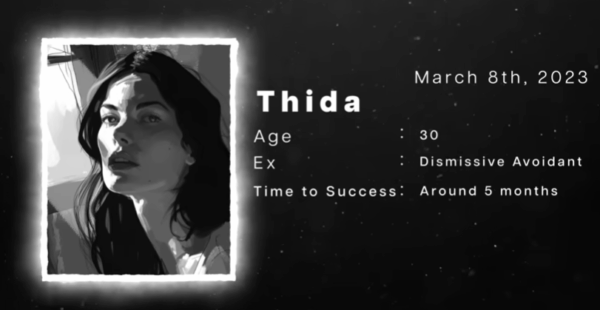


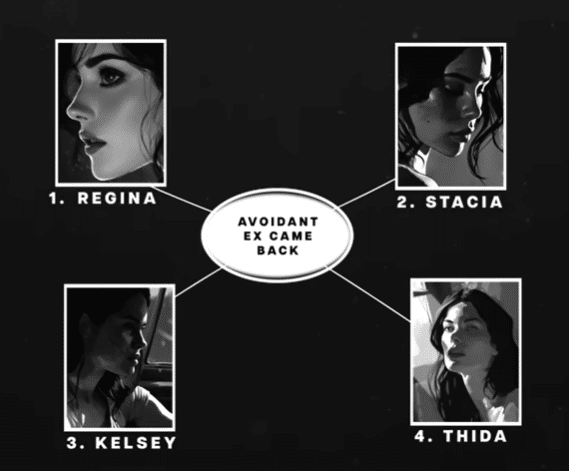

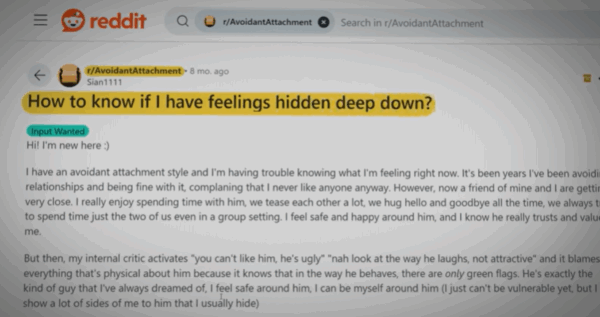



Shannon
September 25, 2025 at 7:34 pm
She wantsbto keep hanging out with me afterb3bweeks and she sees ive changed and she will alwaysbhave feelings for me. But she can’t tell me if she will give me another chance.
M
July 18, 2025 at 2:25 pm
In other words. They only love you at their convenience. Not worthy.
Jennifer
July 7, 2025 at 3:11 pm
Some of this validated my current struggle. My girlfriend broke up with me about 11 days ago citing her “romantic feelings weren’t growing like she liked even though she wanted them to”. She had feelings but “they weren’t growing”. Realistically, we went from friends to a relationship (in which she pursued me) and she was 200% into it in the beginning, it was great. Around the two month mark she began to withdraw and become distant physically and emotionally. Around the 2.5 month mark we ended up having 3 conversations of 10 days about her needing space and alone time and her stagnant feelings for me. Then she went home to visit her family for 5 days, and the day after she returned broke up with me. She made her mind up and there was no changing it despite our previous conversations on how to give her the space she needed and her suggesting starting to see her therapist again (which was scheduled for the day she broke up with me but supposedly the therapist canceled). We are currently no contact (my choice I told her I needed time and space), however she still views my instagram stories and we have mutual friends so we will end up running into eachother. During the breakup I told her I didn’t agree, this is premature and avoidant panic. She really didn’t have anything to say other than its not you its me and that she acknowledged shes avoidant but “she can talk about her feelings”. I said sure but you still put a wall up about a month ago when you switched from 100 percent into it to distancing preventing her feelings to grow.
PrettyGrlMBA
June 27, 2025 at 5:33 am
For securely attached people (like me), word to the wise: avoid avoidants. Their mental gymnastics are ridiculous to a securely attached person & will reek of neediness, desperation & stress. It’s hard to be around them because they don’t readily understand their own feelings – if they can’t understand themselves, the person they spend every waking second with, they will never fully understand or be able to connect with you without you severely contorting to not activate one of their many anxieties.
The fundamental differences in how you process emotions can create significant friction. Their tendency to fight their feelings rather than deal with them is exhausting and childish – don’t mistake this self-sabotaging behavior for intelligence or depth. All that time spent in emotional chaos when you’re used to direct, open communication will leave you drained.
The energy required to constantly navigate their mixed signals and support someone who resists their own emotions is substantial.
Avoid them unless you want a project.
Alison Smyth
June 21, 2025 at 2:01 am
Hello.
I have a question. I met someone on a dating app. He is avoidant and I anxious. We have A LOT in common, more than surface level stuff. Our lifestyle, values, interests etc. We dated a month. In person, all went really well, but it ended. He felt scrutinised and analysed by me and I felt mixed messages and low effort from him. I did read him as it was early dating and I didn’t know where I stood with him. I over communicated by text. It overwhelmed him. We agreed to be friends because we have so much in common and are in similar places in life and live in tbe same area, and since, we have become good friends. As a friend, i have become very open with him and he a little with me, moreso over time. I have turned to him in a time of difficulty. Lately, I feel there is a vibe, and I have redeveloped feelings for him. We keep finding more things in common. The more time i spend with him, the more logical a match and a good team we make. Im not ready to date him yet. Im trying to work on myself. Im burned out. I dated someone after him. I need to rebuild my confidence and patience. I’d like to ask him out in the next few months. I feel like he’s my true partner. He’s also become such a good friend though, that I don’t want to risk anything and damage the friendship. We are friend dating. All our meet ups feel like dates. We are never with anyone else. He has been very supportive of me. He asks questions about the future, even gets a little flirty at times, but then asserts friendship. I think he knows that i like him. Its all a bit confusing. When I pull back from texting, he asks me how I am and checks in. Ive been having a hard time with some things in my life and I’m divorced and when he asks me questions about my past, I think he gets put off and it triggers his avoidance. Sometimes I feel judged. I think hebthinks im needier than i am. I know it’s unintentional. Im just focusing on myself for now and have pulled back a bit but we still have summer plans together like travelling and we still have an active friendship. I don’t want to go cold or cancel plans, but i for need space to focus and heal myself. Being with him sometimes triggers my hurt and self loathing about why it didn’t work out when we dated. Do you think I can get out of the friendzone and date again?